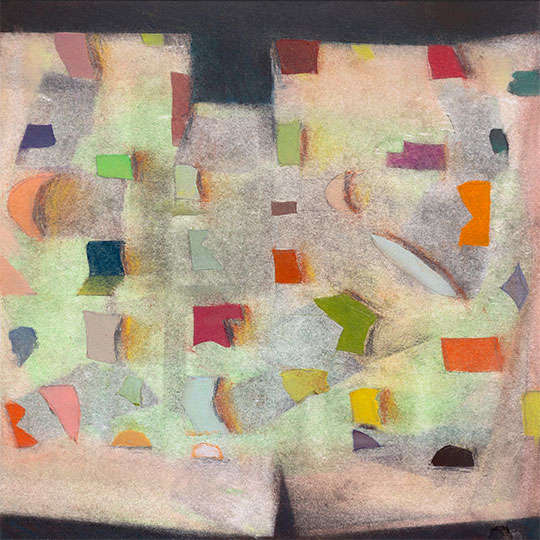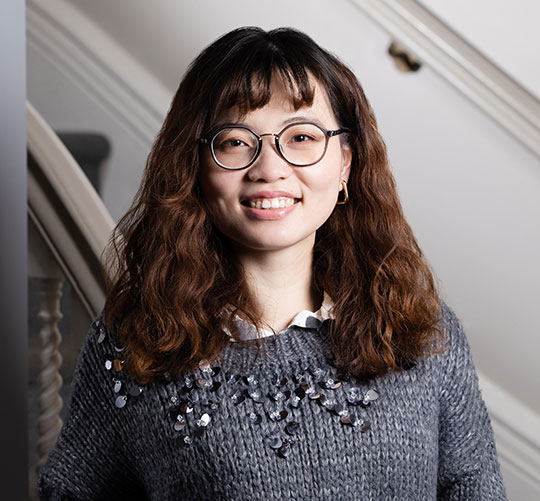This Week in the Arts, October 29-November 4

Several on-campus, public Arts events in the School of Art and Design/Performing Arts Division are scheduled for the week of October 29-November 4. All events are free and open to the public.
Several on-campus, public Arts events in the School of Art and Design/Performing Arts Division are scheduled for the week of October 29-November 4. All events are free and open to the public.
Wednesday, Nov. 2, 7 p.m., Nevins Theater, Wednesday Arts Speaker Series, Alfred University alumnus Jonathan Faber ’94 will lecture on his work.
Faber received an MFA from the University of Texas at Austin and a BFA from Alfred University. He currently resides in Austin, TX and is an Associate Professor at Texas State University School of Art & Design.
He was the recipient of a Pollock Krasner Fellowship and the Joan Mitchell Foundation Grant. His work has been exhibited at numerous galleries and museums across the country, including Cue Art Foundation, New York, NY; Galveston Arts Center, Galveston, Texas; David Shelton Gallery, Houston, Texas; and the Blanton Museum of Art, University of Texas at Austin. He is represented by David Shelton Gallery, Houston, TX.
 Painting to Faber is a physical thinking process––a way of getting involved in a kind of internal dialogue. He is engaged in making works that are primarily abstract but are also connected to a lexicon of real-world imagery. In each painting, there is a negotiation of extremes––a friction between concept and intuition. The artist finely balances methodical and immediate approaches to each image as they undergo a process of formation and deformation, destruction and reconstruction.
Painting to Faber is a physical thinking process––a way of getting involved in a kind of internal dialogue. He is engaged in making works that are primarily abstract but are also connected to a lexicon of real-world imagery. In each painting, there is a negotiation of extremes––a friction between concept and intuition. The artist finely balances methodical and immediate approaches to each image as they undergo a process of formation and deformation, destruction and reconstruction.
A solo exhibition of Faber’s paintings and drawings, titled “Idyll Currents,” will be shown at the Cohen Gallery, opening on Friday, Nov. 4 and remaining on view through Dec. 4. An opening reception is scheduled for Nov. 4 from 6-8 p.m.
Wednesday, Nov. 2, 11:30 a.m.-12:35 p.m., Fall 2022 History of Ceramic Art, Craft, and Design Seminar, guest lecture by Diana X. Yang, a doctoral candidate at the Bard Graduate Center (BGC) in New York City.
The lecture is being offered via Zoom. Advanced registration is required.

Specializing in East Asian decorative arts and material culture, Yang is particularly interested in early modern ceramics and their pivotal roles in transnational maritime trade as well as in Japanese tea culture. Her ongoing dissertation project Migrating Dragons Across the Sea: Zhangzhou Ceramics for Japan and Southeast Asia builds on her expertise in Asian ceramics and explores artistic, technological, and commercial exchanges between Asian potters and European merchants through the case study of Zhangzhou ceramics on the cusp of the seventeenth century.
Featuring cross-cultural conversations and competition in the first wave of “globalization,” her work complicates the canonical reading of Asian art by highlighting works created by so-called “fringe groups” within and neighboring the superpowers. Prior to joining the BGC, Diana received an M.A. in museum studies/museum anthropology from Columbia University. Committed to promoting cross-cultural communication in both the academic and civic sphere, she has pursued a curatorial career at leading art and anthropological museums across the Pacific.
Formerly known as “Swatow ware” to international collectors, Zhangzhou ceramics were manufactured in the Zhangzhou region of Fujian province in China from around 1560 to the 1640s. Featuring a sandy foot, heavy body, and freehand painting, Zhangzhou ware was shunned by fastidious scholar-officials of the late Ming dynasty due to its relative “roughness” compared with refined Jingdezhen porcelains from Jiangxi province. Yet the spontaneity of Zhangzhou blue-and-white and polychrome porcelains stole the hearts of Japanese consumers as soon as they anchored the archipelago.
Concentrating on the representative Zhangzhou ware uncovered from early modern Japanese residential sites, this talk traces the trend of Zhangzhou ceramic consumption among affluent late Momoyama and early Edo patrons. Imported Zhangzhou ware, employed as both extravagant tableware and exclusive tea ceramics, was gradually elevated to an unprecedented artistic summit by Japanese tastemakers, who, unlike their continental counterparts, preferred freedom of brush to fineness of decoration. The inclusive attitude of Japanese connoisseurs helped secure a sweet second home for Zhangzhou ware, which remains obscure in its place of birth this very day.
